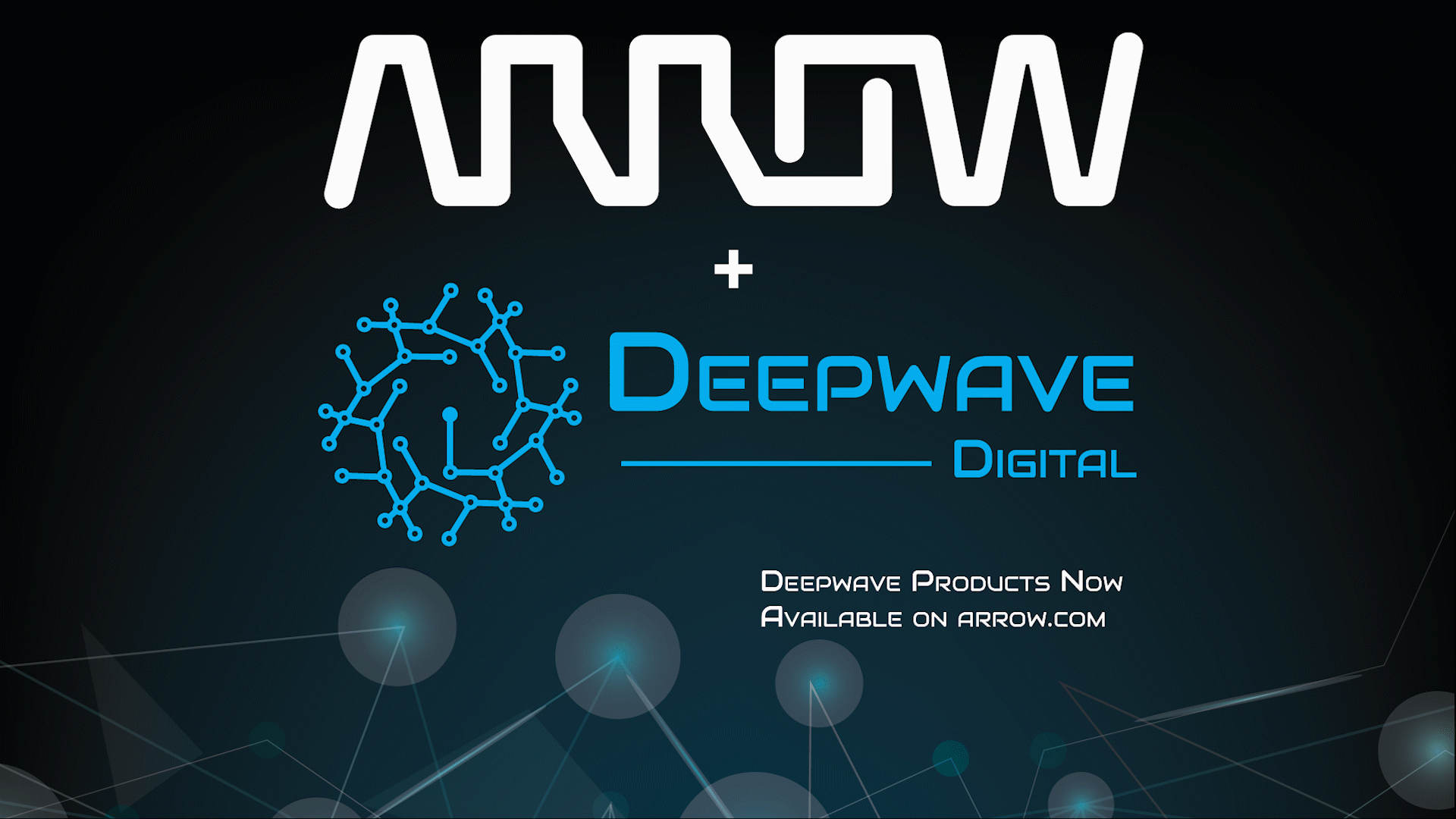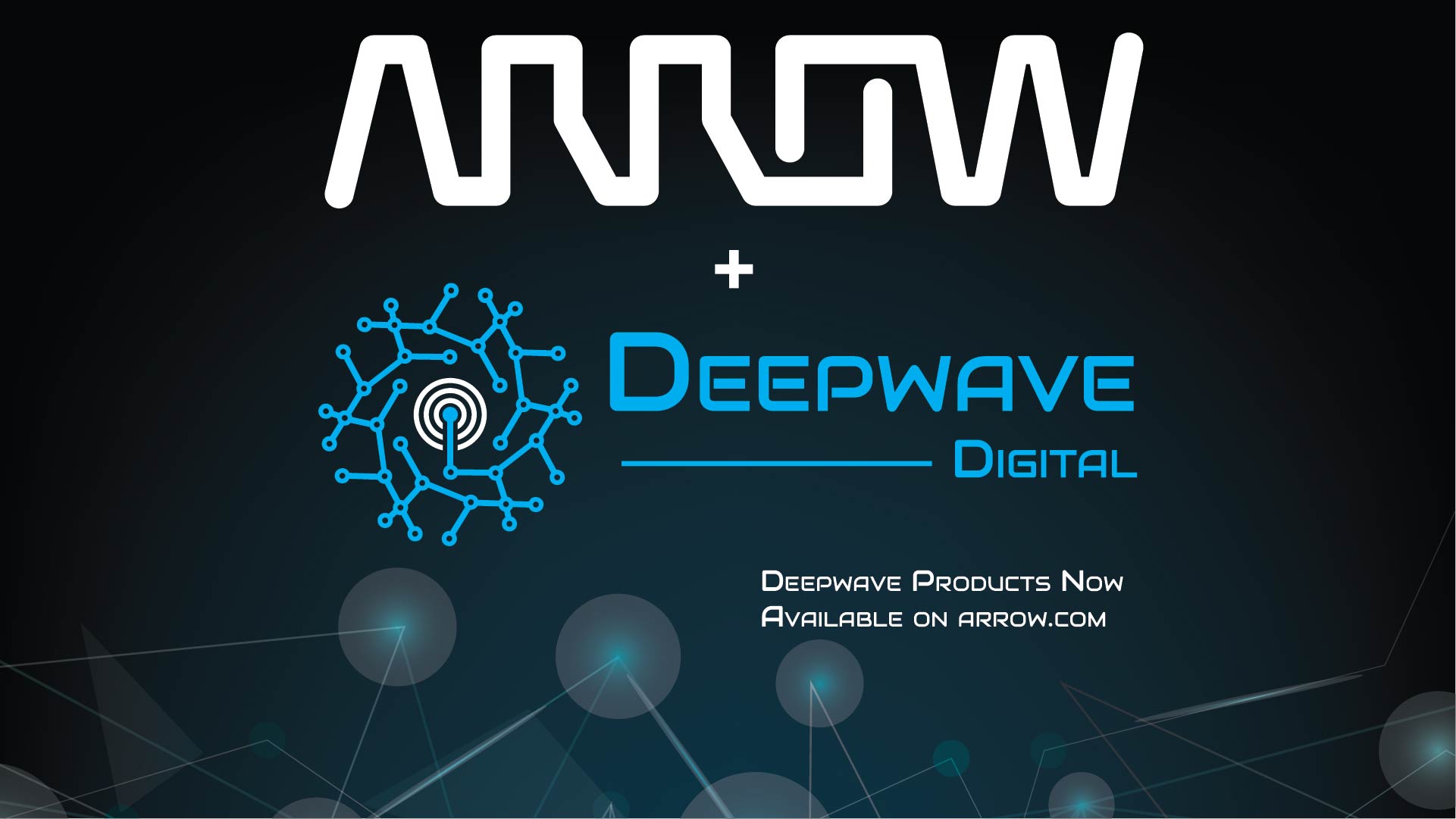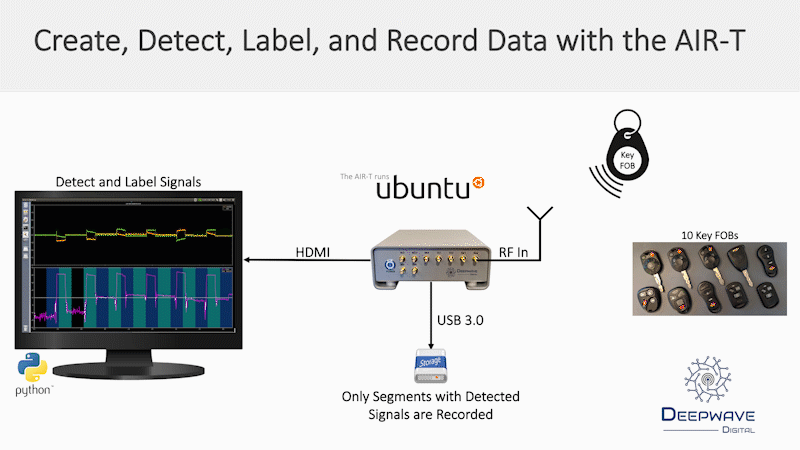
Deepwave Digital is excited to announce that we have expanded our distributors to include Arrow Electronics. Arrow is fully stocked and selling the Artificial Intelligence Radio Tranceiver. The following models are available for sale at Arrow's website:
Artifical Intelligence Radio Tranceiver (AIR-T)
_300x300.jpg)
The AIR7101-A is a high-performance software-defined radio (SDR) seamlessly integrated with state-of-the-art processing and deep learning inference hardware. The incorporation of an embedded graphics processing unit (GPU) enables real-time wideband digital signal processing (DSP) algorithms to be executed in software, without requiring specialized field programmable gate array (FPGA) firmware development. The GPU is the most utilized processor for machine learning, therefore the AIR-T significantly reduces the barrier for engineers to create autonomous signal identification, interference mitigation, and many other machine learning applications. By granting the deep learning algorithm full control over the transceiver system, the AIR-T allows for fully autonomous software defined and cognitive radio.
Artifical Intelligence Radio Tranceiver (AIR-T) with Enclosure

The AIR7101-B is a high-performance software-defined radio (SDR) seamlessly integrated with state-of-the-art processing and deep learning inference hardware. The incorporation of an embedded graphics processing unit (GPU) enables real-time wideband digital signal processing (DSP) algorithms to be executed in software, without requiring specialized field programmable gate array (FPGA) firmware development. The GPU is the most utilized processor for machine learning, therefore the AIR-T significantly reduces the barrier for engineers to create autonomous signal identification, interference mitigation, and many other machine learning applications. By granting the deep learning algorithm full control over the transceiver system, the AIR-T allows for fully autonomous software defined and cognitive radio fully installed in an enclosure.
The Air-T enclosure is expertly constructed from aluminum to produce a polished, elegant, and sleek metallic silver finish. It measures 192 x 182 x 79 mm (7.5 x 7.2 3.1 inches) and the power button illuminates blue when the system is on. All RF ports are brought to the front of the enclosure for ease of use and all computer peripherals connections are brought to the rear.



